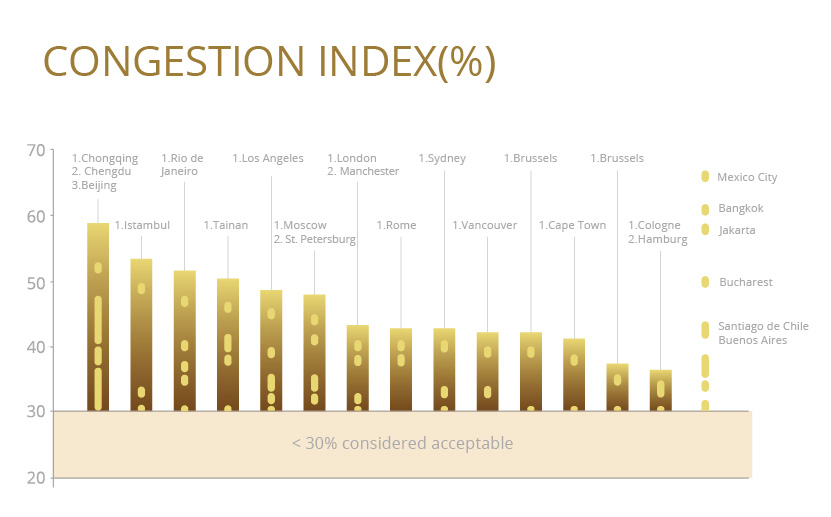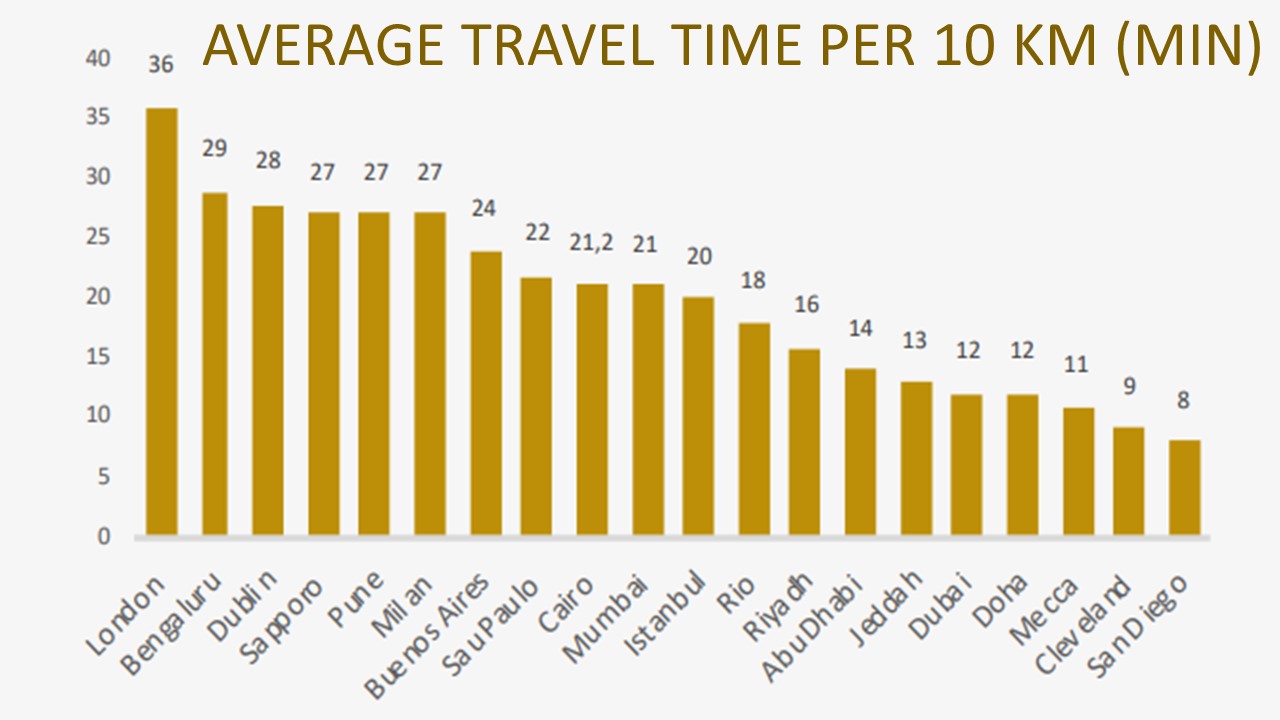There are three key determinants of modern-day transportation challenges:
1.INCREASING CONGESTION, WASTED TIME AND FRUSTRATION:
Traditional transportation systems fail to keep up with the rapid urbanization. These systems are also plagued by congested roads, leading to wasted hours and increased stress.
- CONNECTIVITY AND ACCESSIBILITY:
Some areas are difficult to access due to geographical barriers, inadequate ground infrastructure, or other limitations.
- ENVIRONMENTAL CRISIS:
Vehicular emissions contribute to hazardous air pollution, posing a severe threat to our health and the planet’s well-being
It’s time for a transformative leap forward and bringing the third dimension: Advanced Air Mobilty where NextNorth brings the uber of the skies
NextNorth offers a techology-based air taxi alternative to ground transportation, reducing travel times and bringing a new sustainable and cost-effective mobility.
1. INCREASING CONGESTION, WASTED TIME AND FRUSTRATION
As cities burgeon and traditional transport systems buckle under rapid urbanization, congestion becomes the nemesis of efficient travel. In various global cities, a staggering congestion index near 50% ensnares residents in gridlocks, stealing their most valuable resource – time. Notable examples can be seen in the graphic that include:
-
-
-
-
- Oriental Asia and South America cities with a congestion index around 50%.
- Los Angeles in the USA grappling with a congestion index near 50%.
- Major European cities hovering around 40%, with Istanbul nearing 50%.
-
-
-

Even in the Middle East, where congestion is less pronounced, cities like Cairo, Riyadh, and Abu Dhabi face comparable travel times with high traffic volumes. Despite acceptable congestion percentages, proactive traffic management plans are imperative, a commitment that Middle Eastern governments are actively pursuing.
Considering average travel time per 10 km, Istanbul and Rio, with congestion indexes near 50%, experience travel times of 20 minutes and 18 minutes, respectively. Meanwhile, Middle East cities, with acceptable congestion percentages, exhibit comparable travel times: Cairo (21 min), Riyadh (16 min), Abu Dhabi (14 min), Jeddah (13 min), Dubai (12 min), Doha (12 min), and Mecca (11 min). These figures underscore the urgency for innovative transportation solutions in cities facing high congestion. See these data in the graphic

- CONNECTIVITY AND ACCESSIBILITY
Modern travelers seek authentic experiences in remote locations, from secluded beach resorts to overwater bungalows and deep jungle cabins—an emerging trend known as ‘revenge travel.’ These destinations offer a connection with nature and adhere to sustainability standards, harmonizing with their natural surroundings. However, accessing these idyllic spots proves challenging due to geographical barriers, insufficient ground infrastructure, and other limitations.
Moreover, the issue extends beyond tourism. As many individuals reside in suburban areas, often poorly connected to city centers, traditional transportation falls short in providing efficient and accessible options. The current state of construction technology allows for hotels within natural environments, but accessibility remains a hurdle.
Electric Vertical Takeoff and Landing aircraft (EVTOLs) emerge as a game-changing solution. Designed to serve as sustainable, emissions-free air taxis, EVTOLs overcome the challenges posed by difficult terrains and limited ground infrastructure. NextNorth pioneers this transformative air taxi service, offering not only a remedy for the shortcomings of current transportation to remote destinations but also bridging the accessibility gap between suburban communities and city centers.
- ADDRESSING THE ENVIRONMENTAL CRISIS
Vehicular emissions contribute to hazardous air pollution, posing a severe threat to our health and the planet’s well-being. Total pollutant emissions 2022: 7 million CO2 worldwide. One of the most significant changes for the aviation sector will come through aircraft fuels, regulated by the ReFuel EU Aviation initiative. This project aims to boost the supply and demand for Sustainable Aviation Fuels (SAF), which can reduce aircraft emissions by up to 80%, according to IATA estimates. By 2030, 5% of the fuel used by aircraft must come from organic sources, increasing to 63% by 2050. However, in 2022, this fuel represented less than 0.05% of the total used in the EU.
Airlines emphasize that the introduction of new technologies, improvements in infrastructure, and other methods of gas capture will enable achieving zero emissions by 2050. This also applies to helicopters, where engines using SAF are being developed.
Sustainable mobility, in addition to the use of sustainable fuels, seeks other alternatives, such as:
Electric planes or those using hydrogen engines, which can be used for connections between small population centers.
Electric taxis or EVTOL (Electrical Vertical Takeoff and Landing), which will be offered on the NextNorth Platform. EVTOLs are powered by electric motors and batteries. This technology has the potential to revolutionize aviation by making it more efficient, environmentally friendly, and cost-effective.
KEY BENEFITS OF EVTOL AIRCRAFT:
-
-
- Reduced Infrastructure Needs: Smaller take-off and landing spaces enable operation in urban and suburban areas.
- Improved Energy Efficiency: Electric propulsion lowers fuel costs and enhances efficiency during various flight phases.
- Point-to-Point Urban Travel: EVTOLs combine the benefits of helicopters and airplanes, revolutionizing short-distance air travel.
- Zero Emissions: Electric propulsion minimizes environmental impact, making EVTOLs eco-friendly.
- Lower Operating Costs: Simplified electric motors require less maintenance, reducing overall operational expenses.
- Quieter Operation: Smaller, distributed propulsion systems make EVTOLs quieter and more suitable for populated areas.
- Design Flexibility: EVTOLs can take various shapes and sizes, offering design adaptability.
- Enhanced Safety: Multiple independent motors ensure safety, even in the event of a failure.
- Fast Charging: Ongoing industry efforts aim for 5-minute fast charging for a four-passenger air taxi.
-
As we navigate the challenges of urbanization, connectivity demands, and environmental concerns, the rise of EVTOLs signifies a promising future for efficient, sustainable, and accessible urban air mobility. The graphs accompanying this article underscore the urgency for embracing these innovations in the face of the growing complexities of modern-day transportation.
Related Articles
Related
Soaring above the Tourism Trends: How Urban Air Mobility will define the Future of Travel
The global tourism industry is evolving and adapting to new trends and changes in travelers’ habits and preferences, with a primary focus on:
Good quality-price relationship and to travel to nearby destination
Sustainable tourism, where carbon footprint offsetting and the search for more committed and responsible tourism services are key topics for tourists.
Technology throughout the journey: from the search process and travel booking to all the experiences during the trip.
Authentic experiences (known as «revenge travel»).
Health and wellness tourism, featuring longer trips with fewer obligations and more time to relax and recharge
Customized trips where tourists have a personalized experience.
Luxury tourism, where tourists require the services of travel agents and consultants to plan their trip
Title: The Future of Urban Air Mobility: eVTOL and UTM Regulations
The urban air mobility (UAM) landscape is evolving rapidly, with electric vertical takeoff and landing (eVTOL) aircraft leading the charge. These innovative vehicles are set to transform transportation, making it faster, cleaner, and more efficient. However, the...
The Pioneering EVoTL Revolution in Qatar: Soaring into the Future
The transportation landscape in Qatar has been witnessing a revolutionary transformation, thanks to the rapid adoption of Electric Vertical Takeoff and Landing (EVoTL) systems. As an emerging hub for cutting-edge technology and innovation, Qatar is pioneering the...

Comentarios recientes